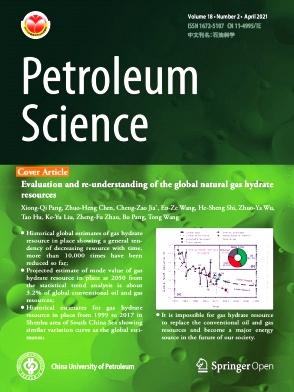Mg-C-O isotopes and elements reveal the origin of dolostone in the Middle Jurassic Buqu Formation
IF 6
1区 工程技术
Q2 ENERGY & FUELS
引用次数: 0
Abstract
The origin of dolostone in the Middle Jurassic Buqu Formation of the Plateau Basin has been a subject of prolonged debate. This study combines detailed petrological observations with analyses of Mg-C-O isotopes and elements to constrain the origin of dolostones in the Buqu Formation. Petrography and cathodoluminescence (CL) examination identified three types of matrix dolostones: very finely to finely crystalline dolostone (D1), finely to medium crystalline dolostone (D2), and medium to coarsely crystalline dolostone (D3). The analysis of the diagenesis sequence reveals that D1 originated from the dolomitization of grainstone in the early diagenetic phase, whereas D2 and D3 resulted from the recrystallization of D1 during the later burial phase. The presence of high Na (>100 ppm), low Fe (<1000 ppm), low Mn (<250 ppm), positive Ce anomaly, LREE enrichment, stable δ26Mg (−2.28‰ to −2.04‰), and δ13C (1.02‰–2.95‰) indicates that the early dolomitization fluid was oxidized seawater. As the crystal size increases (D1→D2→D3), the progressively rising Mn content and significantly negative δ18O (−10.72‰ to −7.81‰) suggest that the dolostone has experienced modification and alteration by buried pore water in the later stages. The fluctuations in relative sea level during the sedimentary deposition of the Buqu Formation were reconstructed through the utilization of Na, Sr/Cu, Sr/Ba, Rb/Sr, ∑REE, and δ13C. It was observed that the δ26Mg of dolostone closely mirrored the variations in sea level. The consistent trend of change confirms that sea level fluctuations control the formation and distribution of early dolostone. Frequent sea level rise and fall prompted the limestone deposited on the carbonate platform to be continuously transformed into dolostone, which accumulates over a long period to form large-scale thick dolostone. After the formation entered the burial stage, under the combined action of high Mg/Ca ratio pore water, high temperature, and high pressure, the early dolostone experienced the adjustment of burial dolomitization. This research offers a typical case study on the application of Mg-C-O isotope and elements to determine the origin of dolostone. This will aid in a more comprehensive understanding of the formation process of dolostone in ancient rock records.
求助全文
约1分钟内获得全文
求助全文
来源期刊

Petroleum Science
地学-地球化学与地球物理
CiteScore
7.70
自引率
16.10%
发文量
311
审稿时长
63 days
期刊介绍:
Petroleum Science is the only English journal in China on petroleum science and technology that is intended for professionals engaged in petroleum science research and technical applications all over the world, as well as the managerial personnel of oil companies. It covers petroleum geology, petroleum geophysics, petroleum engineering, petrochemistry & chemical engineering, petroleum mechanics, and economic management. It aims to introduce the latest results in oil industry research in China, promote cooperation in petroleum science research between China and the rest of the world, and build a bridge for scientific communication between China and the world.
 求助内容:
求助内容: 应助结果提醒方式:
应助结果提醒方式:


